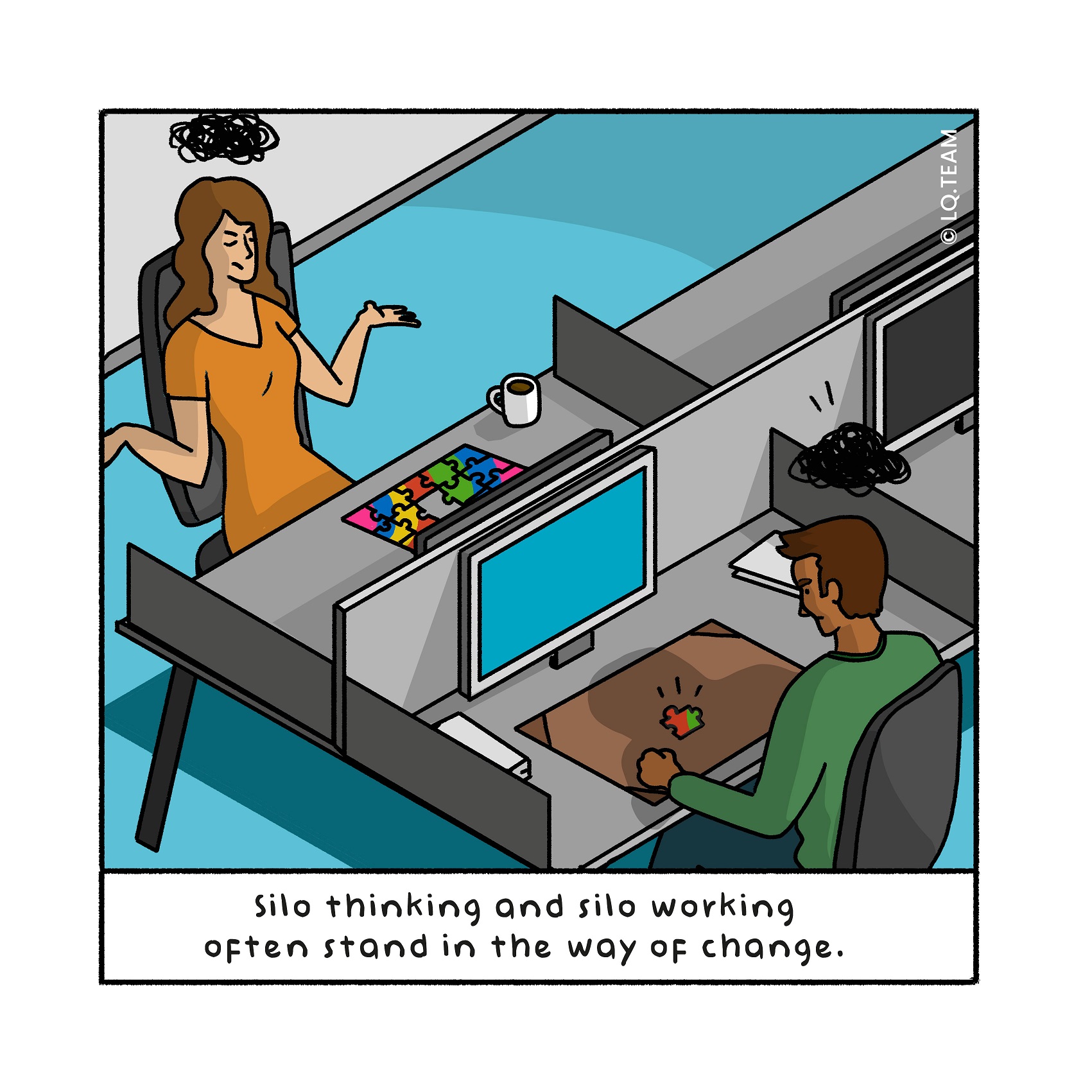
Nut to crack: How do you break through the silos in your organisation?
Optimising processes and systems is often reasonably doable within one department or discipline. However, this is frequently not where the most sig- nificant gains are to be made. Actual value creation or cost reduction usually requires adjustments that transcend departments or disciplines. And that’s precisely where it gets tricky. Silo thinking and silo working in internal de- partments often stand in the way of change. Opposing departmental kpis can reinforce this polarisation. How do you break through those internal silos so that value creation can occur?
Nutcracker: Visualise the customer journey
However different the departments are, they have one vital thing in com- mon: they have the same end customer. If you focus on the customer journey and zoom in on the customers’ hurdles, it often becomes painfully clear how sub-optimally internal departments work together. By physically drawing out this customer journey, with employees of the internal departments involved, on a large sheet of brown paper, you offer insights into the biggest bottle- necks while simultaneously energising the willingness to work on improve- ments. By validating that customer journey with the end customer, you kill two birds with one stone. You create a visual for the priorities to improve the customer experience, and demonstrate to the customer that you take their needs very seriously, effectively growing the customer relationship. The ex- ample illustrates this in more detail.
Real-life example: Focus on customer connections
The Business Services Director of a multinational wants to further integrate the finance, it and hr processes to provide better services to the internal customer, the employee. Opposing interests and silo thinking in the departments involved stand in the way of this integration. Fierce discussions occur around who should carry the budget, and crossdepartmental initiatives always lose priority over departmentspecific activities. The good news is that, despite these differences, there is only one truth for everyone: that of the customer, in this case, the internal employee. But the customer has yet to be set as the priority.
The director therefore invites four employees on the same day: a trainee, a secretary, a marketing manager, and a business unit director. They are all in different stages of the employee cycle. The first only arrived three months ago. The second has been at the company for five years. The third has just been promoted, and the fourth will leave shortly. They each tell their story, one after the other. Together with the directors of Finance, it and hr, the Business Services Director visualises the four customer journeys on a large sheet of paper on the wall, based on the four stories. The information from the employees symbolises the experience of a larger group of employees in comparable stages or positions. Those directors weigh up all the evidence and come to a conclusion: it’s a mess! Suppose you start as an employee at this organisation. In that case, it takes three weeks to begin working, often requiring five or more phone calls to get the basics (computer, system access, telephone) in place. Even if you’ve been working there for a while, you still don’t know whom to contact if you run into a problem, such as your computer is not working or you need a new plug; you feel like you are sent from pillar to post. And ending your contract and leaving is entirely possible without a check on whether you are taking sensitive company information. The positive exception is the pro motion process; that process is transparent and well supported online, and the financial consequences are implemented without any problems.
Despite that last positive note, the experience was a wakeup call for the directors pres ent. They suspected that the service was not topnotch, but holding up this mirror was very confrontational. This led to redesigning the year agendas of the departments and installing crossfunctional teams that address the most urgent bottlenecks in the cus tomer journey.
A year later, you can see the crossfunctional focus diminishing again despite good re sults. Time for the next action…
Tip for change leader
Processes work least well at moments of interdepartmental handover. By assembling crossfunctional teams, you can break through silos.
Tip for change enabler
Use lean management and customer journey mapping techniques to optimise processes from a customer perspective and minimise inefficiencies.
Kernel: Customer journey connects
Silo thinking and working occurs in many organisations. It is easier to get support for cross-functional collaboration and the associated value creation by making the customer journey and the hurdles in it explicit.
